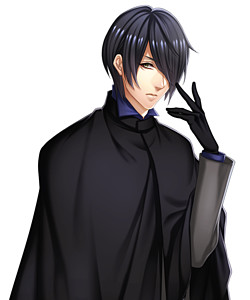Rang Seong-hun
Rang Seong-hun | |
|---|---|
 | |
| Nickname(s) | The Joyonghean Samegawa |
| Born | 19 May 1915 Paju, Gyeonggi Province, Joyonghea |
| Died | 12 August 2011 (96 years old) Paju, Gyeonggi Province, Joyonghea |
| Allegiance | |
| Service/ | |
| Years of service | 1935 - 1976 |
| Rank | Colonel (1942) Brigadier (1945) General (1955) |
| Commands held |
|
| Battles/wars | Second Europan War The Northern Corridor War War of Lorican Aggression |
| Awards | Order of His Sovereign Highness |
Rang Seong-hun (15 May 1915 - 12 August 2011) was a Joyonghean General who served in the Joyonghean Soverign Army who gained prominence for being mostly under the command of Zanarkian General Edward Samegawa.
He started his career as an officer in 1935. When the Third Joyonghean-Quenminese War began in 1937, he was often deployed in the frontlines under the command of General Chae Hwa-young. He gained the high command's notice when he found himself trapped in an encirclement and subsequently breaking out with his formation during the First Battle of Jihabeu. Chae noticed this and subsequently promoted the young Major to Colonel in 1939. During the Fall of Yeolcheon in 1940, he found himself defending General Chae's rear guard only to be relieved by General Namgung Wook-yun just a few days after the Joyongheans retreated from the capital.
Seong-hun would find himself conducting liaison roles until in 1942, when he found himself trapped during the Battle of the Gap. He found himself and his regiment too late to retreat but had managed to rendezvous with the ZANAC forces under the command of General Edward Samegawa. During the siege at Songsinan, he offered his services to Samegawa by providing him with vital reconnaissance runs, which had proved vital when the ZANACs broke out of the encirclement during Operation Hydroxide. After the breakout, Rang continued to serve under Samegawa, along with his formation that consisted of the remaining elements of the 21st Area Division, seeing as Samegawa had much use for his abilities in battle. Although some Joyonghean officials were appalled by his decision, Generalissimo Cheon Sang-ji gave his blessing to Seong-hun to remain under Samegawa.
Seong-hun would learn how to command an army effectively under Samegawa. As a result, he would employ various tactics employed by ZANAC infantry. His abilities in the field greatly impressed General Chae and Cheon, who noticed similarities with Samegawa with regards to infantry movements and strategies. As a result, he was given the moniker of "The Joyonghean Samegawa".
When the Third Joyonghean-Quenminese War ended, he was promoted to Brigadier by Generalissimo Cheon and soon found himself continuing to serve under Samegawa during The Northern Corridor Wars. In General Chae's first month of pregnancy in December 1945, Samegawa began to train Seong-hun on how to handle Chae's formations, as he could not trust anyone but him, and that Chae had been grooming Rang to succeed her in the event that she becomes pregnant and retire. By June 1946, General Chae Hwa-young retired from the army, transferring responsibilities of the First Conglomerate to Rang while Samegawa followed a few months later. He was succeeded by General Simmon Denzel Crocker, one of the ZANAC officers that Rang frequently worked with. The two continued to command the Army Group until in 1975, when it was demobilised at the end of the War of Lorican Aggression.
He subsequently retired a year later, but later found work as President of the Zanarkian and Joyonghean Veterans Association, which was a group of veterans who were under the 1st Zanarkian-Joyonghean Army Group. He died in 2011 survived by his wife, 5 children, and 8 grandchildren. Rang's legacy can be seen in many ZANAC and Joyonghean veteran groups and their families to who continued to keep the memories of the veterans alive.